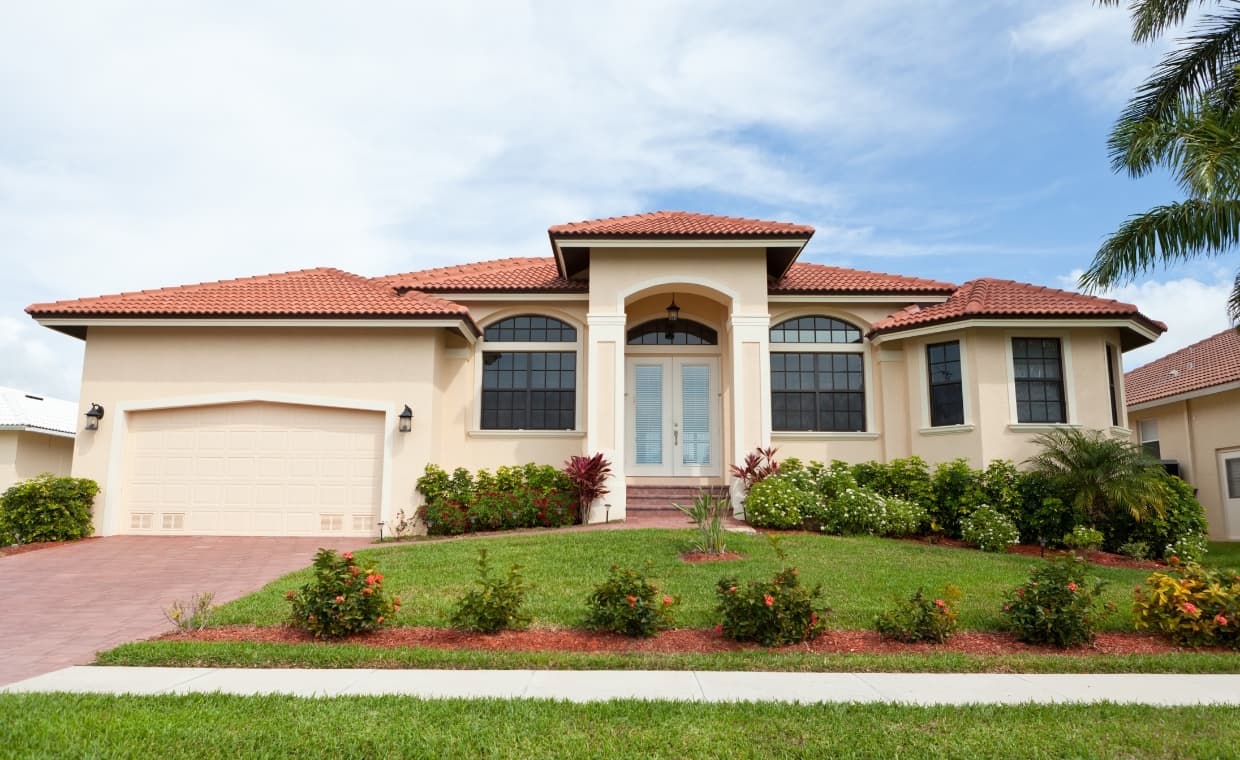
Table of Contents
Quick Overview
- House on hilly terrain often face soil erosion issues due to heavy rainfall, runoff, and lack of vegetation.
- It is necessary to safeguard slopes with effective soil erosion control measures.
- Soil erosion control methods are proven slope fixes that help stop soil from washing away.
- Key solutions include:
1. Stabilizing bare slopes with fast-growth coverage grasses like annual rye blends or by using hydroseeding practices.
2. Install physical barriers like straw wattles or stack blocks.
3. Redirecting the flow of water towards safer exits. 4. Planting deep-rooted species such as ceanothus, manzanita, or oak-based plants for long-term stability.
Heavy rain poses threat to a calm hillside as it weaken slopes, ruin stability, and invite costly repairs. Taking action before damage sets in transforms a fragile incline into a fortified landscape capable of withstanding even the most punishing weather events.
Modern storms hit harder and more often, testing the limits of unprotected terrain. Strategic measures – living plant networks, engineered barriers, and smart water diversion—anchor soil, slow runoff, and preserve both safety and beauty. Combining rapid-response solutions with durable reinforcements creates a slope that remains steadfast and resilient for decades.
Stabilizing Bare Slopes with Fast-Growth Coverage

When slopes are left bare after a storm, they become vulnerable to rapid soil loss during the next rainfall. Quick-establishing grasses, like annual rye blends, sprout within weeks, and provides a protective cover to soil against erosion. They will soften the impact of raindrops on soil and slow down the water flow. These grasses can be paired with straw mulch or biodegradable mats to protect germination sites, holding soil in place even on steep grades prone to washouts. Many property owners choose hydroseeding services for faster coverage and built-in erosion protection on challenging terrain.
Establishing deep-rooted turf starts with good soil contact. Light raking followed by gentle rolling encourages sprouting, while twice-daily watering supports early growth. As shoots emerge, transitioning to one deep soak promotes stronger roots. Within two weeks, a lush green layer can stabilize the surface, buying time for more permanent erosion control methods to take hold.
Installing Physical Barriers for Immediate Soil Retention

Physical barriers are a quick solution to control soil erosion, slow down water flow and holding sediment. Straw wattles, placed in shallow contour trenches and pinned firmly, work like speed bumps, while coir logs offer long-lasting reinforcement on steep terrain. Overlapping and securing these barriers creates a continuous defense line.
Where concentrated flows threaten slope stability, retaining wall blocks add structural support. Stack blocks with a slight backward lean, backfill with compacted gravel, and cover exposed soil with erosion control blankets. Strategic spacing—closer on steep ground—prevents water from regaining momentum. These measures give immediate protection, allowing time for vegetation or other permanent fixes to take hold without the risk of further soil loss during seasonal rains.
Redirecting Water Flow Away from Vulnerable Areas

Water that races unchecked can undo even the strongest slope protections. French drains, built from gravel-filled trenches with perforated pipe, catch and redirect subsurface flow before it destabilizes the soil. Gentle grading across flat areas shifts surface water toward safer exits, while rock-lined swales carry runoff without cutting channels.
To safeguard the slope’s base, discharge points should land on stable ground or into planted swales that slow the flow. This redirection of water flow prevents sudden washouts and also maintains a balanced slope where water will flow gently without eroding the soil.
Choosing Deep-Rooted Plants for Long-Term Stability

Deep-rooted plants form a living network that strengthens soil for decades. Shrubs like native ceanothus, manzanita, or oak-based species develop strong anchor roots that resist sliding. Pair them with drought-tolerant plants for resilience during dry months. Arrange so mature canopies overlap, covering the ground completely to block erosion from starting.
Apply a 2 – 3 inches mulch layer around plants, keeping it several inches from stems to avoid rot. Stagger plant rows along contour lines with 3 – 6 feet of offset to break water flow. Over time, this planting method creates a dense, interwoven root and foliage system that shields soil from rainfall impact and helps it remain in place through changing conditions.
Applying Hardscape Solutions for High-Impact Erosion Zones
Where water funnels with high force, hardscape methods add long-lasting stability. Terraces divide slopes into smaller, level sections, each backfilled with compacted gravel and anchored by geotextile in loose soils. Risers of 12 – 18 inches with treads 3 – 4 feet wide create usable steps that interrupt runoff.
At slope bases, riprap over a crushed-rock bed disperses flow, preventing channel formation. Permeable paver paths handle both water and foot traffic, installed on open-graded aggregate with solid edge restraints. Combining terraces, riprap, and permeable paving balances function and durability, creating a slope that resists damage, channels water safely, and retains its appearance despite intense storms that could otherwise cause significant soil displacement.
Also Read: Benefits of Hardscaping | Reasons for Hiring Hardscape Company!
Lasting slope stability comes from swift action paired with enduring safeguards. Fast-growing vegetation blankets bare soil, reducing impact from rain and wind. Barriers slow runoff, while drainage systems guide water to harmless outlets. Deep-rooted plants weave the ground together, and terraces or stonework stand firm against powerful flows. Addressing weaknesses before they expand keeps slopes steady in all weather. Through every season, a well-protected slope holds its shape and strength, resisting erosion, preserving beauty, and guarding structures below – proof that preventive care is the most reliable defense against the forces that would otherwise wear the land away.
Also Read: 7 Ways to Protect Your Home Against the Elements
FAQs on Slope Fixes
01. How to safeguard soil from washing away on hill areas?
The best way to safeguard soil is by protecting slopes using a combination of techniques such as hydroseeding, physical barriers, water diversion, and hardscape reinforcements.
02. How to stabilize a soil slope?
You can stabilize a soil slope by planting quick-establishing grasses like annual rye blends, and by constructing retaining walls for added support.
03. What are the best ground cover plants for hillside?
Deep-rooted shrubs like ceanothus, manzanita, and drought-tolerant natives are ideal for long-term slope stability.
04. How does a French drain help with slope erosion?
A French drain redirects subsurface water away from the slope.
05. Can retaining walls prevent soil erosion completely?
Definitely, a retaining wall prevents soil erosion and also improve soil stability.






























